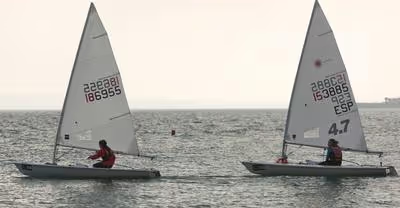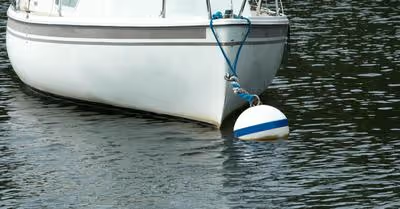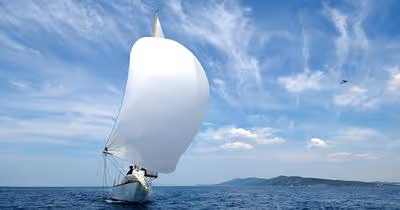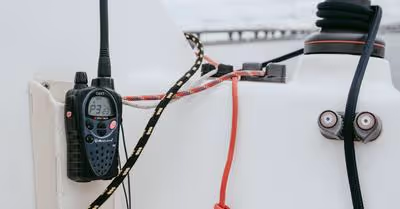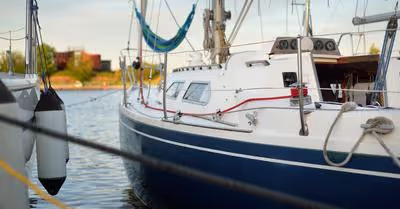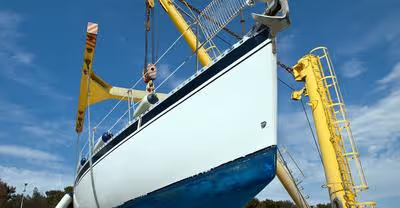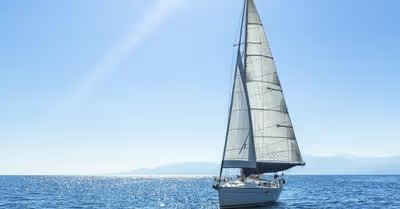Table of Contents
General Beneteau Sailboat issues
Like any sailboat, Beneteau's suffer from a variety of issues. Here are some of the more common ones. These issues are common to all Beneteau models and not specific to any model. We’ll break down issues by model later in the article.
Poor ventilation
This is a problem with all Beneteau boats from the 411 to the 511, 521 and beyond. All of these boats were designed by Beneteau's naval architects in France for French conditions where it rarely gets terribly hot or cold. The bulkheads are also very carefully engineered to meet rigid French stability requirements and they don't leave much room for air flow between the hulls. The result is a boat that can get very uncomfortable in hot weather, especially when it's raining or there are waves. If you are considering buying one of these boats make sure you understand this issue. You may need to install more ventilation than Beneteau provides. We have a number of customers who have done this with great success.
Poor headroom in the main salon
This is especially a problem for anyone over 6' tall. Again, it's a result of the French design requirements which focus on making sure the boat handles well and is safe in rough seas. The headroom in the aft staterooms is OK, but the salon can be a bit of an issue for taller people.
Cockpit lockers that fill with water
This is especially true on boats that have been around for a while like this one. And, it's mainly an issue in saltwater and cold weather as opposed to fresh water where the boat is moored. The Beneteau 411 lockers are not really designed to be watertight and they will fill up with water over time. This can be a real problem if you're using the boat in salt water and it starts to rain. You may need to bail out the lockers or put some sort of drain in them to help keep this from happening.
Leaking Windows
Many Beneteau sailboats suffer from leaking windows, especially those that were manufactured in the early 2000s. This can be a difficult problem to fix, as the windows are not easily accessible.
Moisture Damage
Another common issue with Beneteaus is moisture damage. This can be caused by leaking windows, the main drain line (which can be easily fixed), or air conditioners that are poorly installed (see the boat's manual for proper installation).
Bilge Water
If your bilge pump doesn't pick up water, you may find it accumulating at the back of the boat. This is usually caused by an improperly fitted keel (see the keel guide for more information on how to fit a keel).
Bilge Pump Doesn't Turn On
A low electrical voltage may cause your bilge pump to not turn on. To fix this, you will need to either replace the battery and alternator (this is best done by a certified Beneteau technician) or increase your electrical load (usually done by adding an inverter).
Issues with specific Beneteau sailboats
Beneteau 411
In the earlier models, there was a problem with the engine exhaust fumes entering through to the cabin. There was also a cabin sole delamination issue from poor adhesion of glue and a faulty sealant. The early models had a flaw in their wiring diagrams which caused instability in voltage regulators and other electronics. Some boats also had problems with their furling systems.
Beneteau Cyclades
In the early models, there were cracking and corrosion issues with the aluminum support beams. The mainsheet traveler track would also sometimes break loose from the deck. Later models developed leaks in the portlights and windows.
Beneteau Oceanis
Some people complain about lack of room in the aft cabin. The storage locker also gets damaged when the tender is used on a davit to lift it from the sea. If you carry out too much reefing, then there have been reports that one may have to replace the shrouds and stays since they get fatigued with repeated tension and pressure.
The Beneteau Oceanis is a great cruiser but it often suffers from some common issues. One of the most common issues is water infiltration. This can be caused by a number of things, such as old hatches, improper caulking, and poor seam sealing. If not addressed, this can lead to extensive water damage to the boat's interior.
Another common issue is wet bunks, especially on boats with poling platforms. The design of the platform allows water to be thrown off the prop and onto the bunks during docking maneuvers. Once again, if not addressed it can lead to extensive damage to the boat's interior. A solution is to place a rubber "skirt" around the platform that will direct the water away from bunks and up and over the gunwale.
The Beneteau Oceanis shares many components with the Beneteau First Series, such as engine parts. The engine is a common trouble spot on both boats because of inadequate cooling and low output alternators. One way to address these issues is by adding an extra water pump to the cooling system. This will help ensure proper engine temperature and avoid overheating during hot summer days.
Another common trouble spot on both the Beneteau Oceanis and First Series is the thru-hull seawater intake fitting. In many cases the valve fails causing the raw water pump to pump saltwater into the engine and eventually leading to its demise. The solution is to upgrade the sea strainer with a bronze filter that allows water flow and stops debris and other contaminants from entering the boat's cooling system.
One problem area unique to the Oceanis is its leaky hull-to-deck joint. Beneteau used a type of sealant that is not very watertight. Eventually the sealant fails and water flows into the boat. The only solution is to re-seal the joint with a better quality sealant.
Beneteau First 435
There were complaints about the mainsail boom. The lower section of it would come loose and fall off every time you would drop the main sail. This problem was later fixed by wiring down the boom. It also had a headstay stanchion which got torn off and needed to be replaced.
The GFCP (Genoa Furler Control Pod) is a common issue on the Beneteau First 435. It's located at the base of the mast on the starboard side and is responsible for controlling the furling of the genoa. Many owners have complained about its design because it's prone to failure. The problems seem to stem from two issues: first, the plastic gear that meshes with the one on the genoa winch fails after time (this is an issue common to many boats but it's exacerbated by the fact that most owners will head offshore at some point and put their boat through its paces). The second issue, which is more concerning to us, is that water can easily make its way into the unit during difficult manoeuvers and cause it to fail. This can lead to the furling line getting caught in the gears and ruining the genoa as well as potentially causing other damage to the boat.
The next issue we want to discuss is the Rocna anchor. The Rocna is a fantastic anchor but it has one significant drawback: its design means that it can't be disassembled. This makes the retrieval of a broken anchor extremely difficult (not impossible, just frustrating). Beneteau included this anchor in their 2015 refit which was supposed to fix the lack of windlass issues but many owners have found that even with two anchors on board you still don't have much confidence when anchoring in a blow.
The final issue we'll mention is the winches. The winches on the Beneteau First 435 are terrible. They're small, plastic, and prone to failure. This is a major issue when you consider the fact that most of the maneuvers you'll make while sailing this boat will require the use of a winch.
Beneteau First 456
Most of the complaints are about poor workmanship, water leaks and corrosion. There were also reports that when the wind increased up to 20 knots, the mast would bend inwards making it impossible for one to steer or take off sail. There was no way to brace the boat except by using a preventer.
It is important to be aware of these common issues before you buy your Beneteau Sailboat, so that you can be prepared for the possible problems that might come up in the future. It's also a good idea to have a good marine mechanic on hand who can help you out with any repairs that might need to be done.
Some additional issues with Beneteau Sailboats include:
- Swing keel issues on certain models
- Leaking diesel tanks, caused by poor seam welding
- Faulty electrical wiring, which can cause fires or other problems
- Structural problems with the hull or deck, often caused by poor construction or materials
These are just a few of the most common Beneteau sailboat issues. If you're experiencing any problems with your boat, be sure to consult your owner's manual or contact a Beneteau technician.
Recent Articles



